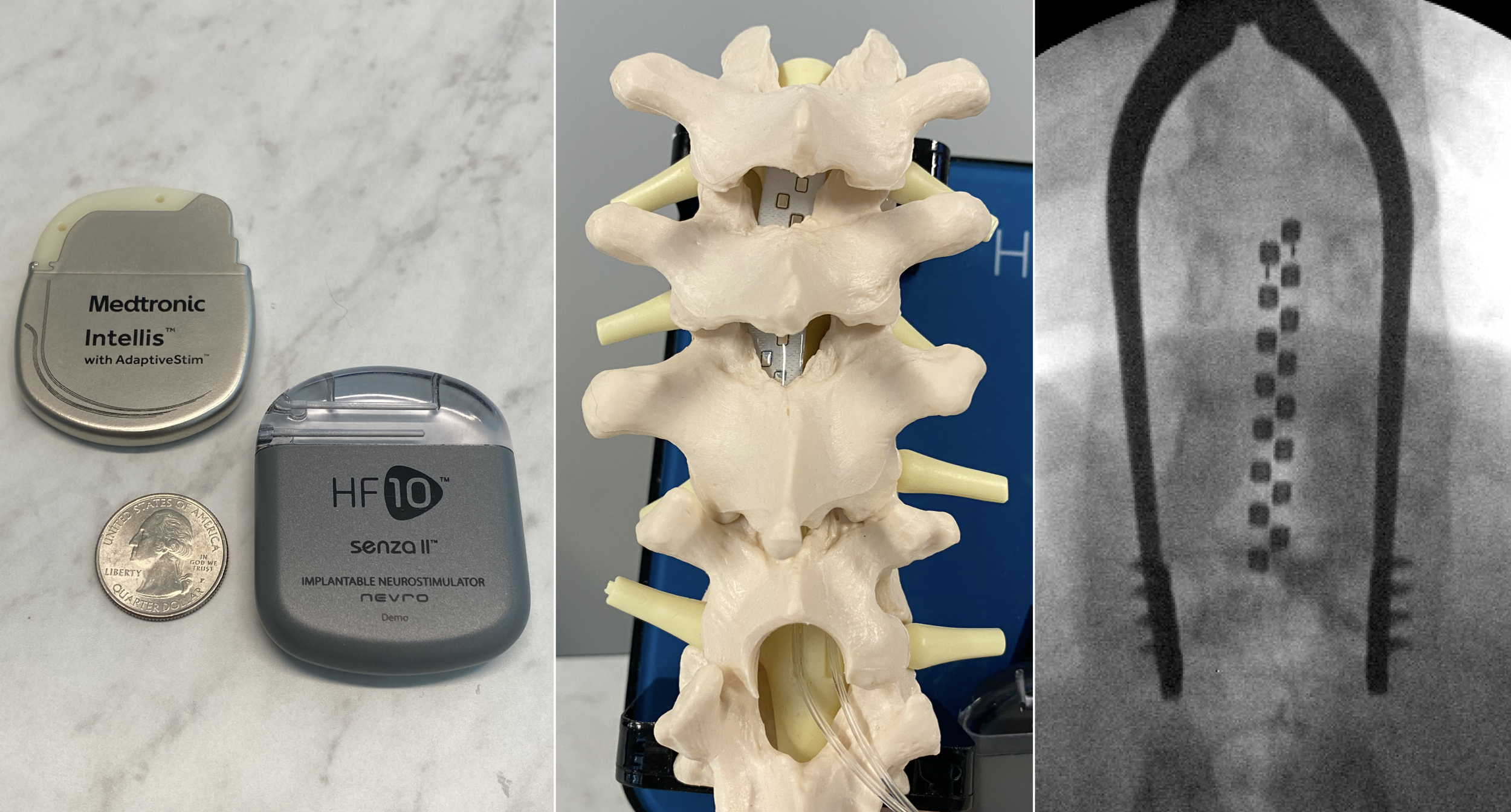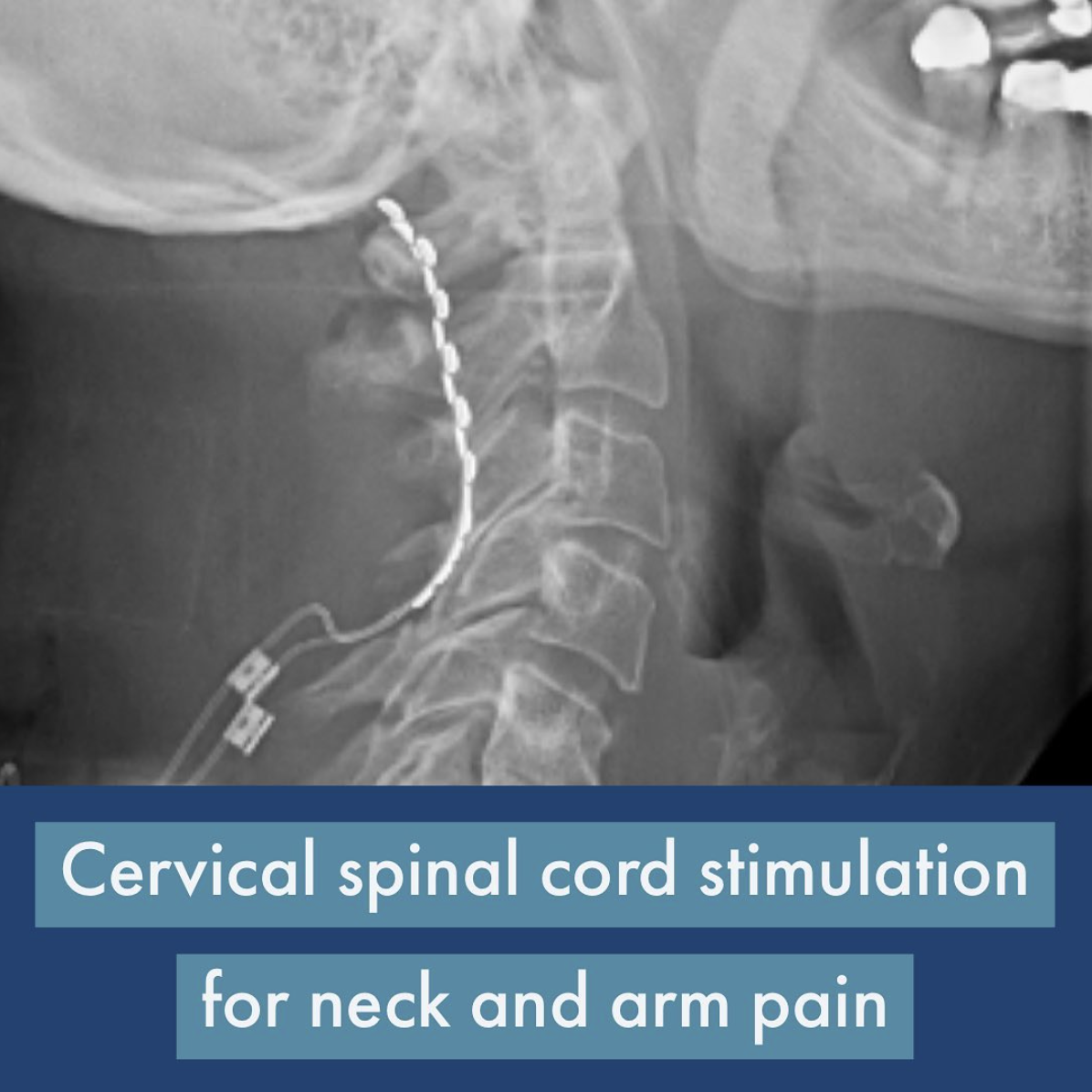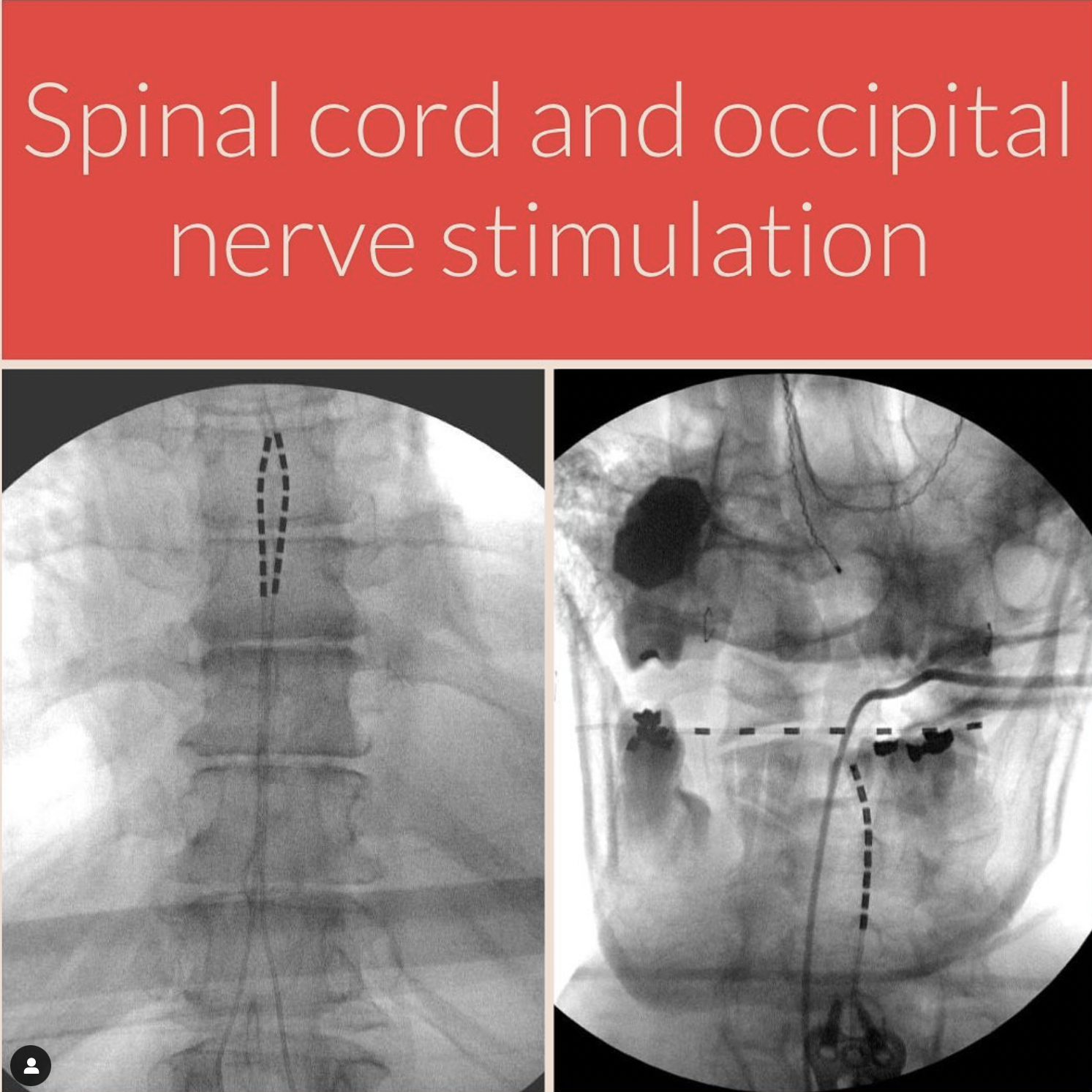Spinal Cord Stimulation
-
Spinal cord stimulation (SCS) is a form of neuromodulation used for treating certain chronic pain disorders. An SCS system consists of one or two wires implanted inside the spinal canal just above the spinal cord. The wires are connected to a battery implanted under the skin on the flank. The system delivers pulses of energy to the spinal cord - similar to a what TENS unit does to the skin - disrupting the processing and transmission of pain signals.
-
SCS is used most commonly chronic, low back and leg pain, in particular after lumbar spine surgery (so-called failed back surgery syndrome). It can also be used for similar pain affecting the neck and arms or the trunk. Another common indication is complex regional pain syndrome (CRPS), a disorder of delayed chronic pain as well as swelling and other changes in a limb after an injury. In general, SCS and other forms of neuromodulation, including DRG stimulation, trigeminal nerve stimulation, and occipital nerve stimulation, are used for what are called neuropathic pain disorders.
-
The process of SCS begins with an evaluation by your pain doctor, neurologist, or neurosurgeon. Once you are judged to be a candidate for SCS, a referral is made to a pain psychologist. This is a screening evaluation that is required by insurance companies. It usually consists of a questionnaire and a brief interview. These can usually be done over the phone.
After completing your pain psychology evaluation, we will make arrangements for a trial of SCS. In an SCS trial, wires are implanted in the spine - usually for one week. You have an opportunity to test the therapy at home to see how much relief it provides for your chronic pain. At the conclusion of the trial, the wires are removed during an office visit.
SCS trial wires are implanted in a minor procedure using a needle. In some cases (especially if you have had an extensive fusion in your spine), it may be necessary to perform a laminectomy for the trial.
If you have significant relief in your chronic pain, we will discuss implanting a permanent SCS system. Our usual threshold is a reduction in your chronic pain by at least 50%. The permanent SCS system is implanted entirely under your skin in an outpatient procedure (no hospital stay).
-
Spinal cord stimulation has been studied in randomized, controlled clinical trials - the gold standard in medicine. Benefits of SCS from these trials include significant reductions in back and leg (or arm) pain, reduced need for opioid pain medications, reduced disability due to pain, and improved quality of life, among others.
The main risk of SCS is inadequate relief of your pain; this is why we perform a trial on all patients. Side effects of some systems include tingling (paresthesias) in your back or limbs. Other risks are similar to those of a laminectomy: infection, spinal fluid leak, and injury to the nerve roots or spinal cord.
Photographs showing example spinal cord stimulator pulse generators (left), a spine model with an implanted paddle lead (middle), and an X-ray of an implanted stimulator paddle in the spine (right).





